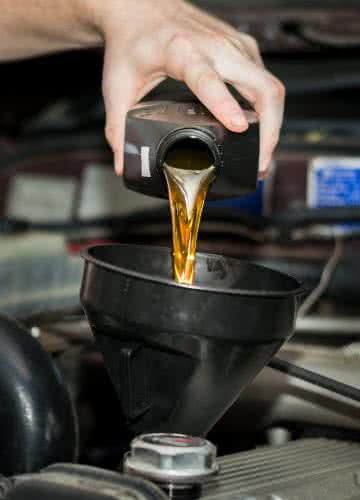“
Never mix two different coolants together as it could cause a damaging chemical reaction.

It could happen to any of us, we’ve found oil on the garage floor that we can’t recognise or we’ve mistakenly put the wrong fluid in our vehicle. Understanding the look, feel and purpose or each fluid is important.
Here's a rundown of the major fluids:
Automatic Transmission Fluid
- Automatic transmission fluid is used to lubricate transmission valves, gears and the torque converter as well as prevent brake band friction.
- ATF is usually red in colour although some synthetic transmission fluids appear clear.
- ATF has a thin viscosity.
Power Steering Fluid
- Power steering fluid is a hydraulic fluid used in the power steering system to move the steering rack in relation to the position of the steering wheel.
- Power steering fluid is extremely similar to ATF in colour and viscosity.
- Low Power steering fluid levels or a leak will cause steering to feel heavy or shudder.
Manual Transmission & Differential Gear Oil
- Gear oil is designed to protect and lubricate your manual transmission and/or differential gears.
- Gold or brown in colour, gear oil has a high viscosity that ensures lubrication through the entire gear set.
- Gear oil also has a distinctive sulphur smell.
Engine or Motor Oil
- Engine oil is optimized for protecting engine components. It reduces component friction, cools moving parts by dispersing heat and keeps the engine clean and free from rust and corrosion.
- Engine oil is the same gold/brown colour as gear oil but has a much lower viscosity.
- Make sure you check your engine oil regularly using a dipstick. If the oil appears black or contains metal flecks it’s time to change.
Brake Fluid
- Brake fluid is the fluid contained in the brakes hydraulics. It is used to operate the pistons that compress the brake pads.
- Both have a light clear colour and a thin viscosity.
Anti-Freeze/Anti-Boil or Coolant
- Finally we have coolant - or anti-freeze/anit-boil. This liquid flows through the engine block and radiator dispersing heat.
- Coolant comes in many types and colours. Check with your vehicles manual or manufacturer for the correct fluid to use.
- Never mix two different coolants together as it could cause a damaging chemical reaction.
- When leaked coolant fluid will resemble coloured water.
*Important information* - Click here to read more about our How-To terms and conditions.